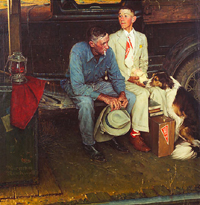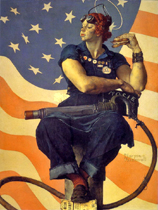
Norman Rockwell Art Prints
Norman Rockwell Art Prints
Norman Rockwell is revered as one of the great American artists of the 20th century. His distinctive style and unique choice of subjects were appreciated in his day as well as decades after his death. By 1916, he had created his first of many Saturday Evening Post covers – three hundred and seventeen in all. By the early 1920s, his work for magazines was growing in popularity and bringing in numerous requests. In 1920, he made a painting for the Boy Scouts of America calendar, a project he supported until just before his death. Today, Norman Rockwell art prints are in high demand.
Life in
Rockwell lived in
Four Freedoms Series
In 1942, Rockwell painted one his most overtly political and important pieces. In response to a speech given by President Franklin Roosevelt, the artist created a series entitled the Four Freedoms. Throughout the mid-1940s, these paintings traveled around the country in an effort to help raise funds for the war through the sale of bonds. Viewed by more than a million people, their popularity was considered a representation of the war effort at home. During the late 1940s and 1950s, Rockwell maintained his reputation as one of the most prolific and recognized illustrators in the country.

Breaking Home Ties
Rockwell painted Breaking Home Ties for the
Rosie the Riveter 
In 1942, a popular song about a patriotic female defense worker called Rosie the Riveter served as the inspiration for a new kind of American woman. Norman Rockwell painted Rosie the Riveter for the May 29, 1943, cover of The Saturday Evening Post. Rosie the Riveter represents the six million women who worked in the manufacturing plants that produced munitions and material during World War II while the men were off fighting the war. The painting was originally meant to represent strong American support for the war. Like the Four Freedoms, Rockwell's Rosie the Riveter was taken on a nationwide tour to promote the sale of war bonds during the World War II to help raise funds to support the war effort.
Norman Rockwell art prints have become American cultural icons. They represent simplicity embedded with complex meanings and metaphors. Rockwell was a visionary, an artist well-ahead of his time. He redefined art with his unique techniques, and managed to maintain traditional American values while being innovative.
Donovan Gauvreau
Art Historian, Donovan Gauvreau lectures about art therapy with a focus on creativity development. He believes we can learn from the great masters in art to communicate ideas and feelings through painting. He provides content for www.AaronArtPrints.org to educate and inspire people to take a glimpse into an artist's life to better understand the meaning behind their work.












